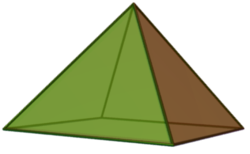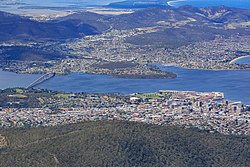Wikipedia:Today's featured list/March 2025
Featured list tools: |
March 3
The 77th Academy Awards ceremony, presented by the Academy of Motion Picture Arts and Sciences (AMPAS), honored films released in 2004 and took place on February 27, 2005, at the Kodak Theatre in Hollywood, Los Angeles. During the ceremony, AMPAS presented Academy Awards in 24 categories. Televised in the United States by ABC, the ceremony was produced by Gilbert Cates and directed by Louis J. Horvitz. Actor Chris Rock hosted the show for the first time. Million Dollar Baby won four awards, including Best Picture and Best Director for Clint Eastwood (pictured). Other winners included The Aviator, with five awards, and The Incredibles and Ray, with two each. The telecast garnered more than 42 million viewers in the United States. (Full list...)
- International Film Music Critics Association Award for Best Original Score for Television
- Chronic pain syndromes
- 2024 Men's T20 World Cup statistics
March 7

Ten goaltenders and seventy-three skaters have played for the United States in the Olympic Games. The United States women's national ice hockey team has participated in every Winter Olympic tournament since 1998, when the Olympic Games first featured women's ice hockey. The American women's team has played in every gold medal match except for 2006, winning two gold medals, four silver medals, and one bronze medal. Four players from the American teams over the years (Natalie Darwitz, Cammi Granato, Angela Ruggiero, and Krissy Wendell) are members of the Hockey Hall of Fame. (Full list...)
March 10
A series of 33 protected cruisers were built by the French Navy during the 1880s and 1890s. Protected cruisers were differentiated from other cruising warships by their relatively light sloped armor deck that provided a measure of protection against incoming shellfire, as opposed to armored cruisers that relied on heavy belt armor, or unprotected cruisers that lacked armor entirely. The first French protected cruiser, Sfax (pictured), was designed in the early 1880s in response to the introduction of similar vessels in the British Royal Navy; two more vessels of similar but larger designs – Tage and Amiral Cécille – followed shortly thereafter. Beginning in the mid-1890s, a series of large cruisers were ordered; the first of these, D'Entrecasteaux, carried the largest guns of any French cruiser. Most of the vessels had relatively uneventful careers, serving in a variety of locations with the main fleets, in the French colonies in Asia, and on patrol in the Atlantic. (Full list...)
March 14
In geometry, there are 92 Johnson solids, which are convex polyhedra in which all faces are regular polygons. The definition of a Johnson solid, according to some authors, excludes uniform polyhedra (which include Platonic solids, Archimedean solids, prisms and antiprisms). They are named after the American mathematician Norman Johnson, who published a list of 92 non-uniform Johnson polyhedra in 1966; his list begins with the equilateral square pyramid (pictured), an example of an elementary polyhedron. His conjecture that the list was complete and no other examples of Johnson solids existed was proven by the Russian-Israeli mathematician Victor Zalgaller in 1969. (Full list...)
March 17
Tasmania has a population of 557,571 as of the 2021 Australian census, and an area of 68,401 square kilometres (26,410 sq mi). It is the smallest Australian state. Official population statistics are published by the Australian Bureau of Statistics (ABS), which conducts a census every five years; 2021 is the most recent census year. The ABS publishes data for various types of geographic structures, including significant urban areas, which represent towns and cities with a population of 10,000 or higher, urban centres and localities, which represent the built-up area of cities and towns with more than 200 people, and local government areas. Hobart (pictured), the capital of Tasmania, is the state's largest urban area, with a population of 226,653 as of the 2021 census. (Full list...)
March 21
How to Train Your Dragon, a 2010 American animated action fantasy film loosely based on the 2003 book of the same name by Cressida Cowell, garnered accolades in a variety of categories, with particular recognition for John Powell's (pictured) musical score. At the 83rd Academy Awards, it received nominations for Best Animated Feature and Best Original Score. The film garnered fourteen nominations at the 38th Annie Awards, including Best Animated Feature and Outstanding Achievement for Directing in an Animated Feature Production, and won ten awards. How to Train Your Dragon also received nominations for two British Academy Film Awards, the Critics' Choice Movie Award for Best Animated Feature, and the Golden Globe Award for Best Animated Feature Film. (Full list...)
March 24
The second generation of the Pokémon franchise features 100 fictional species of creatures introduced to the core video game series in the Game Boy Color games Pokémon Gold and Silver. In these games and their sequels, the player assumes the role of a Trainer whose goal is to capture and use the creatures' special abilities to combat other Pokémon. The generation was unveiled at the beginning of Nintendo Space World 1997, with Gold and Silver first released in November 1999. Pokémon Gold and Silver take place in Johto, which is based on the Kansai region of Japan. Due to the games acting as a sequel to the first generation, the Pokémon designs of the second generation share a strong association with those from the first. Many designs of unused Pokémon for Gold and Silver have surfaced online in the years following its release. (Full list...)
March 28
Following Doctor Who's successful return to television screens in 2005 the BBC commissioned Torchwood, a spin-off series intended for mature audiences. The programme centres around Captain Jack Harkness, a former time-traveling companion of the Doctor, who leads a Cardiff-based team of black operatives that investigate extraterrestrial incidents and are collectively referred to as "Torchwood". Between 22 October 2006 and 15 September 2011, Torchwood broadcast 41 episodes split across four series. Over the course of the programme, Torchwood moved channels. It originally aired on BBC Three while the second series was broadcast on BBC Two and the final two were transmitted on BBC One. The last series also acquired an American co-production deal with the premium cable network Starz. The show initially utilized a monster of the week format but later shifted to a serialised format in Children of Earth and Miracle Day. Torchwood is an anagram of Doctor Who that was used as a title ruse during Doctor Who's revival process. (Full list...)
March 31
There were 49 tropical cyclones in the 2019 Pacific typhoon season, the annual cycle of tropical cyclone formation over the western North Pacific Ocean and the South China Sea. The first cyclone of the season, Tropical Storm Pabuk, developed in late December 2018; the final cyclone, Typhoon Phanfone, dissipated on December 29, 2019. Of the 49 tropical depressions that formed during the season, 29 developed into named tropical storms, 20 became severe tropical storms and 17 became typhoons. Additionally, five typhoons became super typhoons – an unofficial rank given by the United States Joint Typhoon Warning Center to storms with one-minute maximum sustained winds of at least 240 km/h (150 mph). Activity in the 2019 season was greater than normal, primarily due to high sea surface temperatures. The most destructive system was Typhoon Hagibis (pictured), which inflicted damage to Japan that amounted to ¥1.88 trillion (US$17.3 billion) and killed 118 people. (Full list...)







